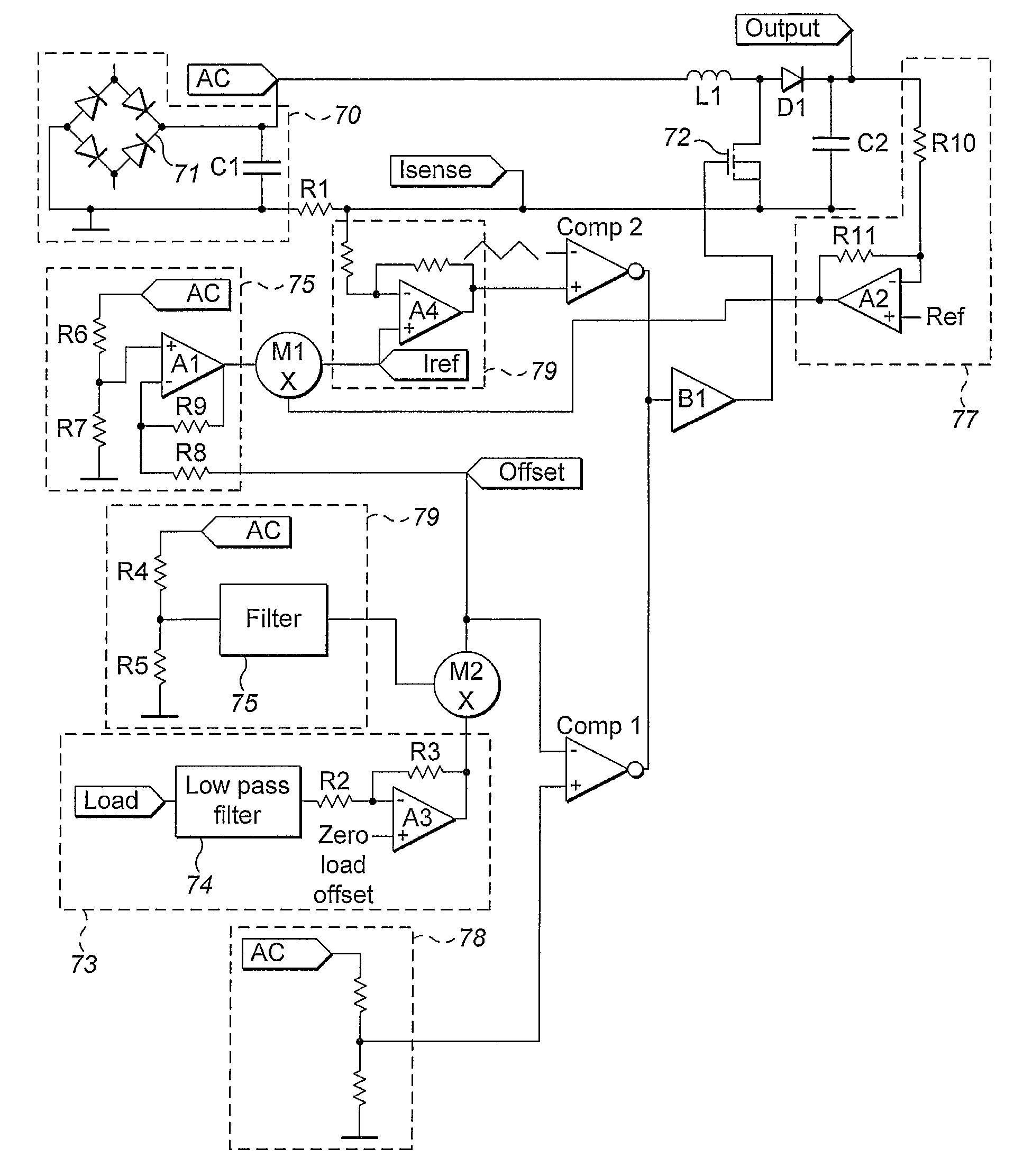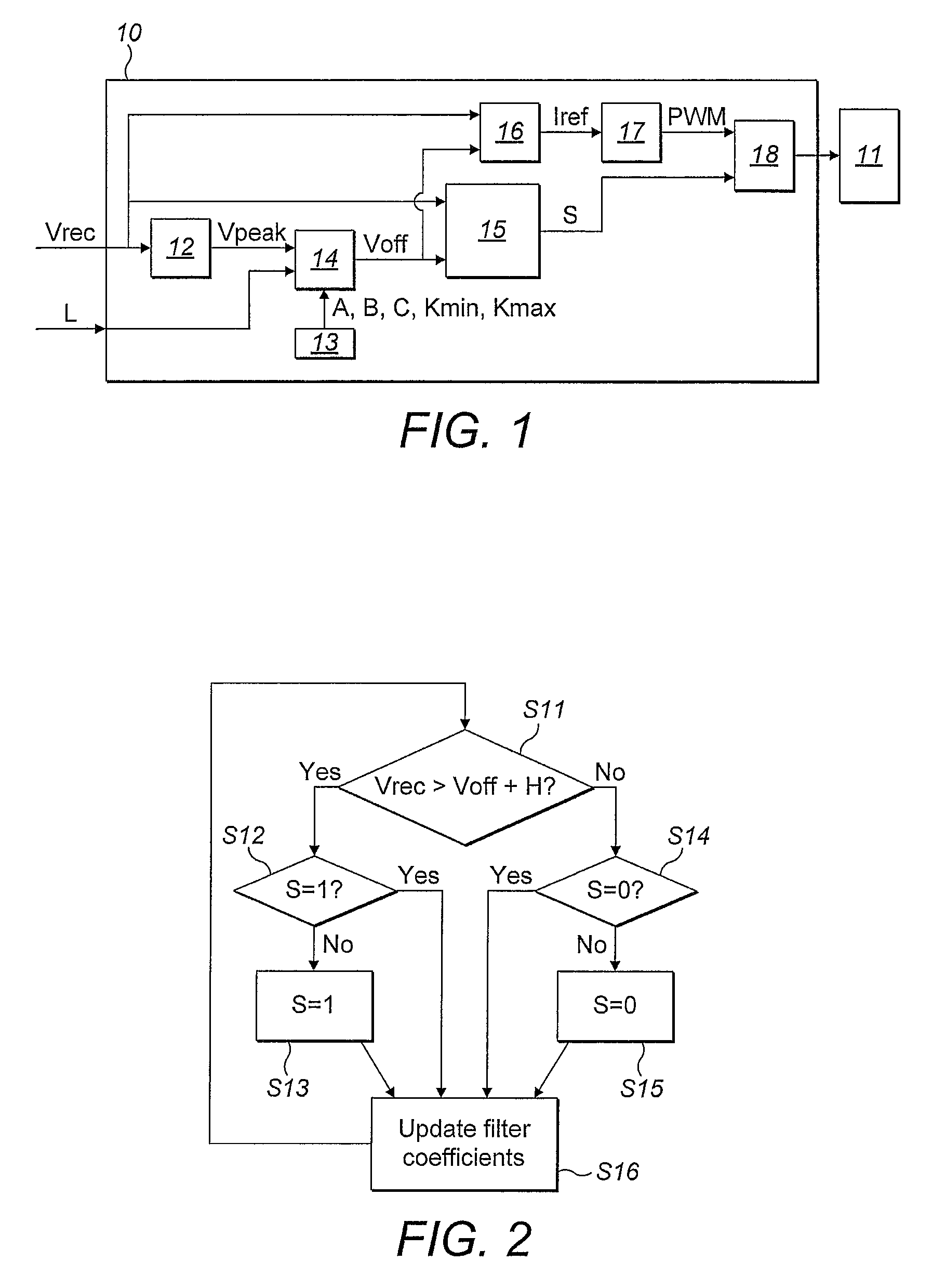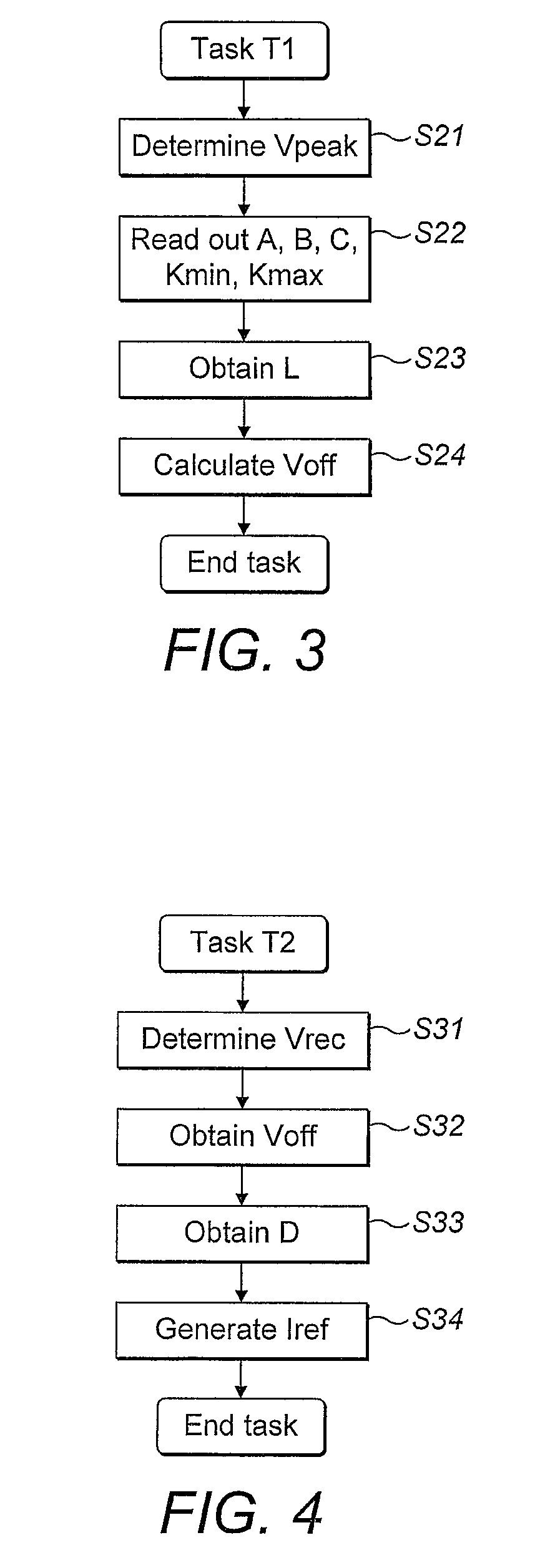Power factor correction device
a power factor and correction device technology, applied in the direction of ac-dc conversion, efficient power electronics conversion, electric variable regulation, etc., can solve the problems of reducing efficiency, reducing efficiency, and increasing the level of audible noise, so as to reduce the number of switching events, improve efficiency, and shorten the conduction
- Summary
- Abstract
- Description
- Claims
- Application Information
AI Technical Summary
Benefits of technology
Problems solved by technology
Method used
Image
Examples
Embodiment Construction
[0121]FIG. 1 shows a PFC circuit which embodies the present invention. The circuit comprises a control module 10 and a current shaping module (switching circuit) 11.
[0122]Switching circuits which shape an input current to follow the waveform of a reference signal are well known in the art. For example, a boost pre-regulator such as that described in Texas Instruments application note SLUA269. Accordingly, the components and functionality of the current shaping module 11 are not described in detail here.
[0123]A rectified voltage input Vrec is provided as an input to the control module, together with a load signal L, which represents the instantaneous current or power drawn by a load associated with the circuit.
[0124]Vrec is provided as input to a first determining module 12 of the control module. The first determining module determines the peak value of Vrec, Vpeak.
[0125]The control module comprises a storage module 13. Storage module 13 stores a look-up table which comprises values ...
PUM
 Login to View More
Login to View More Abstract
Description
Claims
Application Information
 Login to View More
Login to View More - R&D
- Intellectual Property
- Life Sciences
- Materials
- Tech Scout
- Unparalleled Data Quality
- Higher Quality Content
- 60% Fewer Hallucinations
Browse by: Latest US Patents, China's latest patents, Technical Efficacy Thesaurus, Application Domain, Technology Topic, Popular Technical Reports.
© 2025 PatSnap. All rights reserved.Legal|Privacy policy|Modern Slavery Act Transparency Statement|Sitemap|About US| Contact US: help@patsnap.com



